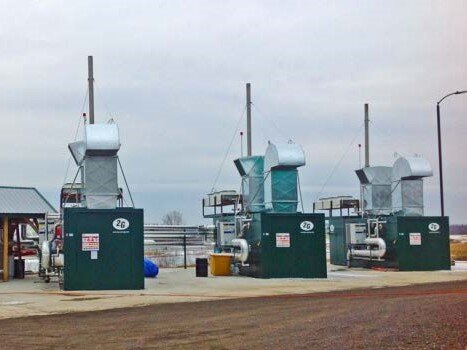How a duck farm in Indiana turned waste into energy with 2G CHP!
Three 2G CHP modules generate electricity and heat from duck waste and other substrates
Facts & figures

One of the largest duck farms and processing facilities in North America owns a large CHP system located outside of Middlebury in Indiana. The customer processes more than 6.5 million ducks every year, all of which are raised in satellite farms in the surrounding area. In 2011, the company started an anaerobic digester to manage the 18,000 pounds per day of duck droppings and offal generated in its processing plant.
The 2G CHP project consists of three fully sound-attenuated containerized CHP modules, each containing a 2G agenitor 212 engine as a prime mover. Each unit has an electrical capacity of 400 ekW/h, providing a total of 1,200 ekW per hour or 9,960 MW/h per year, sold to the local utility company under a 15-year power purchase agreement (PPA). The thermal heat produced is 1,422 kwh/th. This valuable thermal energy is used to heat processing water at the farm's facility, the processing plant, and the digester facility itself. Previously, the farm had to find ways to dispose of all organic waste. The 942,000-gallon capacity digester is designed for and will use a large amount of duck offal combined with corn silage and other substrates to produce high-quality biogas for all three CHP modules. The biogas is first treated and cleaned using a 2G Gas Treatment System consisting of biogas dehumidification for moisture removal before it enters the combustion process for the engine. An additional 2G H2S filtration system was added. The entire power generation process is monitored 24/7.